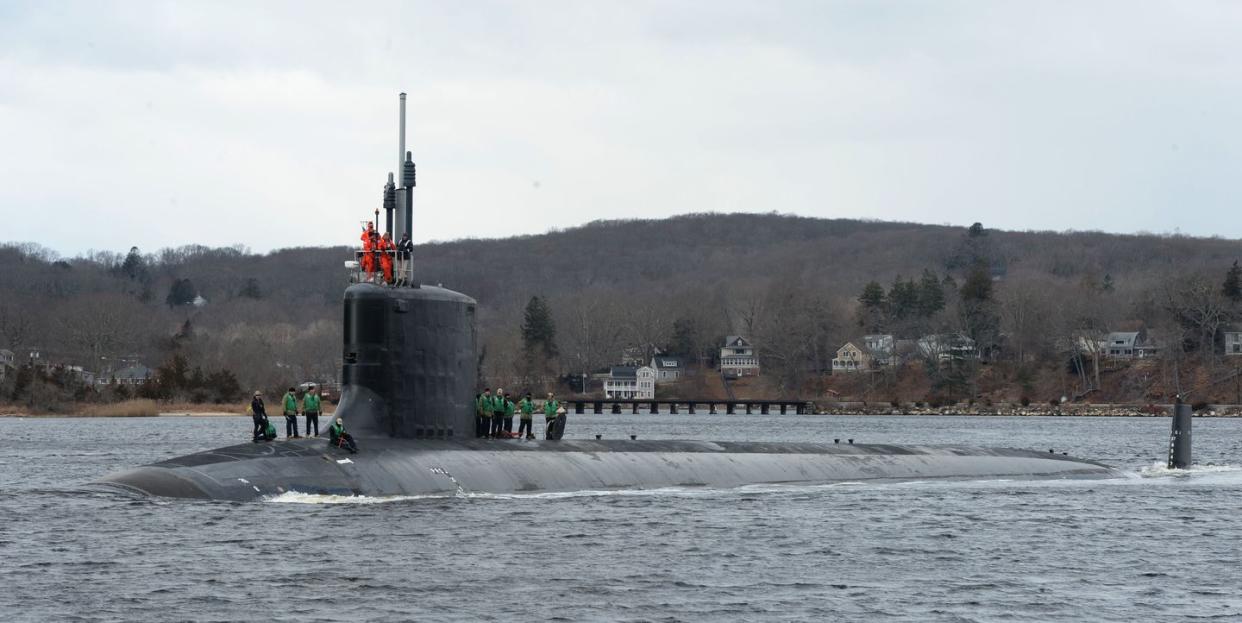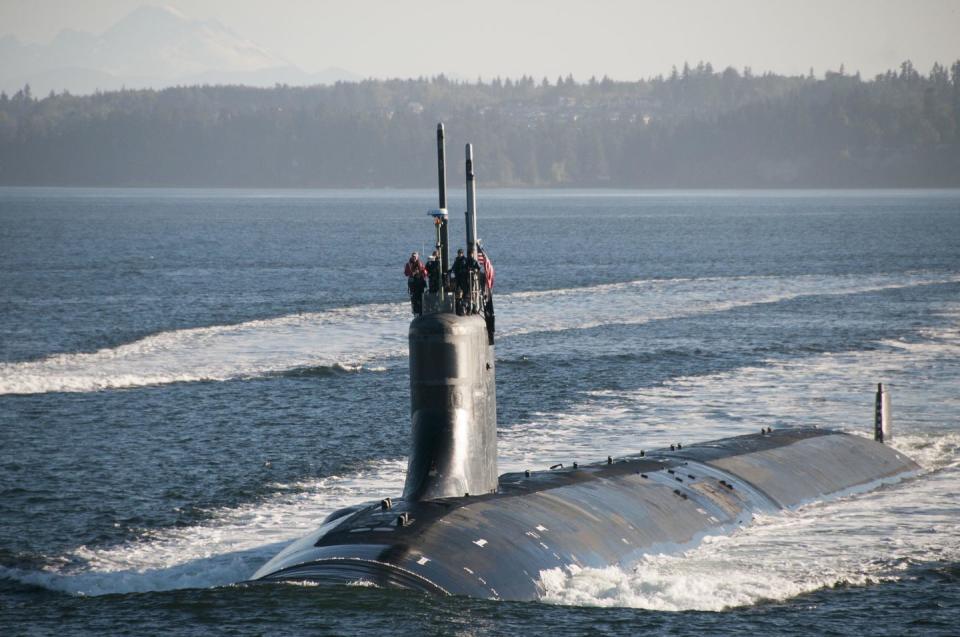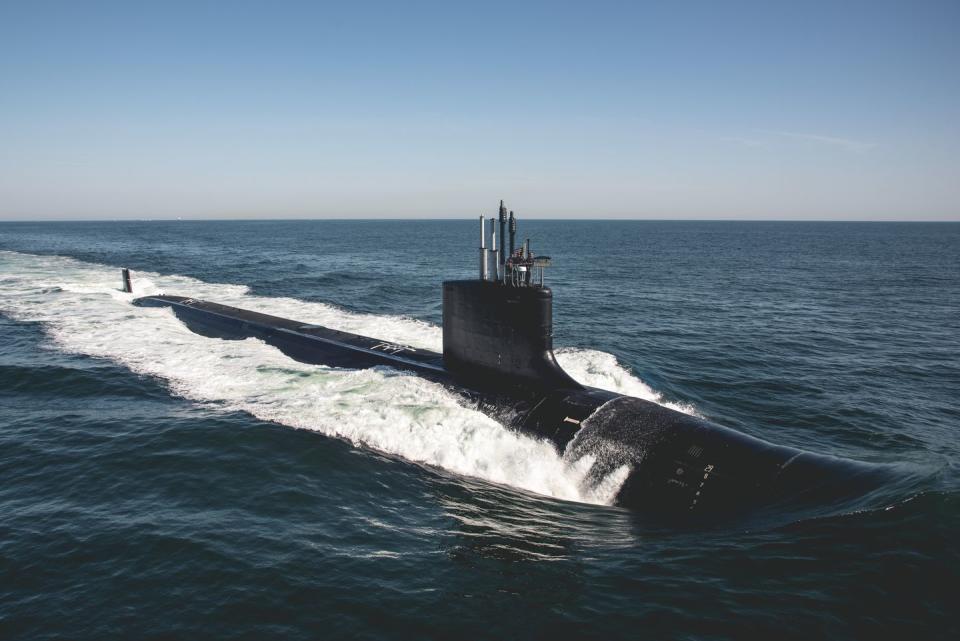The U.S. Navy Signs Up for 9 New Nuclear Submarines

The U.S. Navy will spend a record $22 billion for nine new Virginia-class submarines.
Most of the submarines will include the ability to carry and launch up to 40 cruise missiles.
The submarines will join the fleet in the mid to late 2020s.
The U.S. Navy has just signed the largest warship building deal ever. The service will pay more than 20 billion dollars for nine new Virginia-class attack submarines. The submarines will replace Cold War-era Los Angeles-class boats in America’s submarine fleet, adding new technology and greater firepower. Many of the new submarines will include a long-awaited capability to launch swarms of cruise missiles.
The deal, announced on December 2, awards $22 billion to a shipbuilding team consisting of General Dynamics Electric Boat and Huntington Ingalls Industries. The submarines, The Diplomat reports, will begin construction this year, with deliveries taking place from 2025 to 2029. One of the submarines will be of the Virginia classes’ Block IV configuration, with the remaining eight of the new Block V configuration.
The U.S. Navy has approximately 65 submarines in service. Fourteen are Ohio-class ballistic missile submarines, part of America’s nuclear triad and built to carry out nuclear deterrence patrols. A handful of these submarines are at sea at all times, armed with nuclear weapons. The Navy also maintains four converted Ohio-class submarines capable of carrying up to 154 Tomahawk land attack cruise missiles (TLAMs) a detachment of Navy SEALs and their swimming vehicles, or some combination. The service also operates 35 older Los Angeles-class attack submarines, three Seawolf class submarines, and 13 of the newer Virginia-class submarines.

The Virginia-class submarines were developed in the 2000s after the cancellation of the Seawolf-class after construction of just three boats. The Seawolf submarines are large, powerful, deep-diving submarines capable and hunting Soviet missile-firing submarines under the Arctic ice. The end of the Cold War and the Soviet Union meant the U.S. Navy could no longer justify the cost of the submarines.
The Virginias were designed as jack-of-all-trade submarines, not just capable of fighting major adversaries but also sitting off the coastlines of foreign countries, collecting intelligence, deploying SEAL frogmen, and acting as launch platforms for TLAMs.
Now that the pendulum is swinging back to big power warfare, the Virginias are being progressively upgraded in so-called "Blocks" to make them competitive against Russia and Chinese subs. Block III submarines added a Large Aperture Bow (LAB) sonar array, which the Navy claims “provides enhanced passive detection capabilities.” In other words, submarines with the LAB are better at sitting and quietly listening for the sounds of enemy warships. Block IV Virginias were designed with maintenance and life cycle costs in mind, and as a result the Navy thinks it can squeeze an additional submarine deployment out of them.
The new Block V submarines include the new Virginia Payload Module (VPM). VPM will add four new payload tubes to the submarines, each capable of carrying seven Tomahawk land attack cruise missiles. The Virginias will also retain the ability to launch up to twelve cruise missiles from their torpedo tubes, for a grand total of 40 TLAMs per Block V. This will be particularly important as the U.S. Navy will be retiring the converted Ohio-class cruise missile submarines at around the same time and will help make up for the coming shortfall in long range missile firepower.

The VPMs won’t just carry Tomahawk missiles. The new modules could be capable of carrying other types of missiles including a new Navy hypersonic missile and a new anti-ship missile to replace the submarine launched version of the aging Harpoon missile. Lockheed Martin’s Long Range Anti-Ship Missile, or LRASM, is currently the Pentagon’s anti-ship missile of choice.
As of 2017, Lockheed was preparing to test a VPM launcher for LRASM. The VPM also has the potential to launch and recover drones, including both unmanned aerial vehicles and unmanned undersea vehicles.
According to a Congressional Research Service report, the second Block V submarine will also incorporate “acoustic superiority improvements” designed to make the subs quieter at sea.
The integration of the Virginia Payload Module aboard the new submarines will add to their build time, at least for early vessels, which is why the first boat won’t be ready for six years. Still, when the boats arrive they’ll come at a clip of at least two a year.
The Navy anticipates a Block VI and then fielding an entirely new class of nuclear-powered attack submarine, SSN(X), starting in the 2030s.
Source: The Diplomat
You Might Also Like

